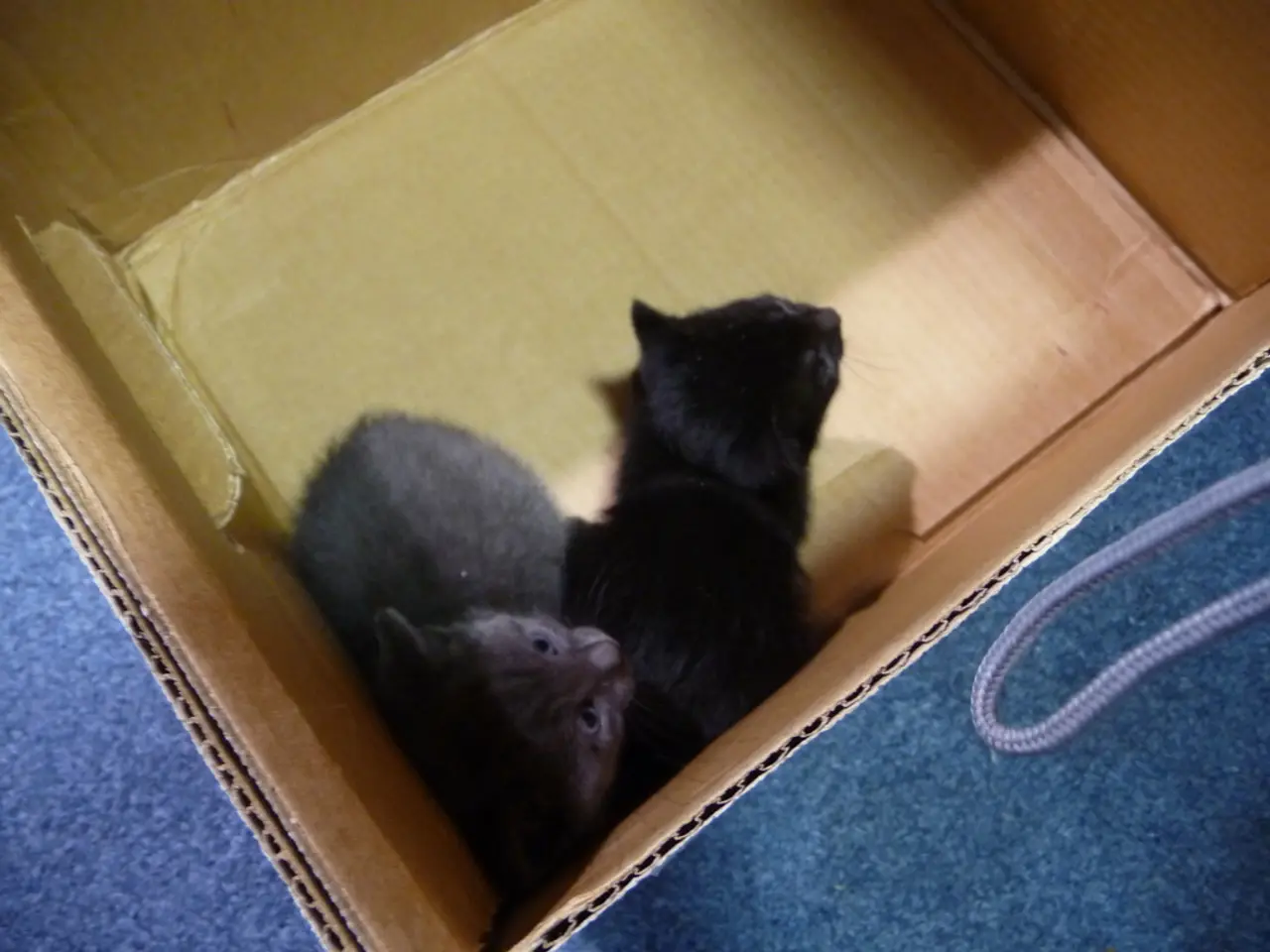Unveiling Trainer's Simple Strategy for Harmonious Coexistence between Cats and Dogs
In a harmonious household, co-existing cats and dogs can lead to a calmer environment. With careful management, patience, and gradual integration, most pets can learn to co-exist peacefully. Here are effective strategies based on expert advice and best practices:
## Step-by-Step Guide for Peaceful Co-Existence
**1. Start With Separate Spaces** - Initially, keep the cat in a separate room where the dog cannot enter. This allows the cat to acclimate to new scents and sounds without feeling threatened. - Keep food bowls, litter boxes, and beds in different locations to prevent territorial disputes.
**2. Scent Introduction** - Allow each pet to explore the other's scent through blankets, toys, or bedding before any face-to-face introductions. - Use treats and praise when your pets are near each other’s scent or during controlled interactions to build positive associations.
**3. Controlled, Gradual Introductions** - Use baby gates, crates, or leashes to allow pets to see and smell each other without direct contact. - Let the cat approach the dog at its own pace, ensuring it always has an escape route. - Keep initial interactions brief, gradually increasing the time as they become more comfortable.
**4. Training and Boundaries** - Teach your dog basic commands like "sit" and "stay" to ensure it can remain calm around the cat. - Watch for signs of stress (hissing, growling, raised fur) and separate pets if necessary. - Always reward both pets for calm and friendly behavior with treats and praise.
**5. Supervised Interaction and Gradual Freedom** - Always supervise interactions until you are confident both pets are comfortable and safe together. - Once comfortable, allow the cat to roam freely while the dog is on a leash. Eventually, both can be off-leash if they remain calm.
**6. Ongoing Management** - Until you are certain they get along, keep cats and dogs separate when you are not home. - Use multiple barriers or management tools (like baby gates and crates) to ensure safety if one fails. - Continue giving both pets attention and maintaining established routines to reduce jealousy and anxiety.
## Additional Tips
- Feed pets in different locations to prevent food aggression. - Cats appreciate high places where they can observe from a safe distance. - Patience is crucial as every animal is different—some may become friends quickly, while others may take weeks or months to adjust.
With time, patience, and careful management, most cats and dogs can learn to co-exist peacefully in the same home. Delaying the resolution of issues can make behaviors more ingrained.
When adding a new pet to a household, it's best to keep them apart for a few days. Cats often seek high vantage points to feel safe, as an instinctive behavior. Providing cat treats and dog toys can help cats and dogs co-exist peacefully in a home. Positive reinforcement is important in helping cats and dogs co-exist, according to expert trainer Juliana DeWillems.
Cats and dogs may sometimes be best friends, but they won't always get along when sharing a home. Expert trainer Juliana DeWillems recommends training cats and dogs together to build relationships. Seek professional help if needed when introducing pets. Each pet should have a safe space to feel secure.
Juliana DeWillems is the owner and head trainer at JW Dog Training & Behavior. Helping cats and dogs get along can take time, but patience increases the likelihood of success. An Instagram post by DeWillems offers advice on helping cats and dogs co-exist in the same home.
For the first face-to-face meeting, use a baby gate or screen. When it comes to introducing a cat to children and a dog to a baby, proper introductions are essential to ensure safety and harmony for all family members.
- Initially, it is recommended to keep your cat in a separate room to help it acclimate to the new dog's scents and sounds without feeling threatened.
- To start, allow each pet to explore the other's scent through items like blankets, toys, or bedding before they have any face-to-face interactions.
- Use baby gates, crates, or leashes to permit pets to see and smell each other without direct contact during the initial stages of introduction.
- As part of the training process, teach your dog basic commands like "sit" and "stay" to ensure it can remain calm around the cat.
- Continue giving both pets attention and maintaining established routines to reduce jealousy and anxiety as they learn to co-exist.
- Until you are confident that your cat and dog can co-exist peacefully, keep them separate when you are not home, using multiple barriers or management tools to ensure their safety.




